Know Your Charactor Actor: Edward Everett Horton
Leave a commentMay 18, 2014 by smumcounty
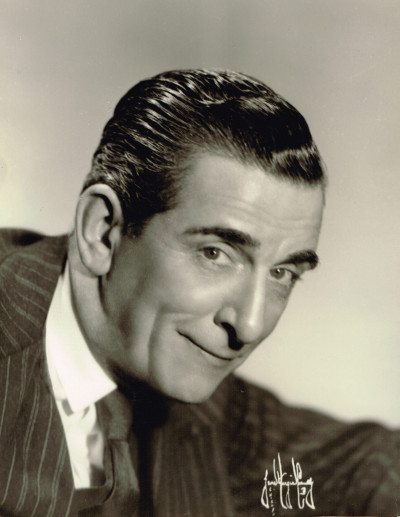 Edward Everett Horton was born in 1886 in Brooklyn, the son of Edward Everett Horton and Isabella Diack Horton. His grandfather was Edward Everett Hale, the author of the short story “Man Without a Country”. He first attended college at Oberlin College in Ohio but was asked to leave after an incident in which he climbed to the roof of a school building and then, after attracting a crowd, threw off a dummy, causing people to think he had jumped.
Edward Everett Horton was born in 1886 in Brooklyn, the son of Edward Everett Horton and Isabella Diack Horton. His grandfather was Edward Everett Hale, the author of the short story “Man Without a Country”. He first attended college at Oberlin College in Ohio but was asked to leave after an incident in which he climbed to the roof of a school building and then, after attracting a crowd, threw off a dummy, causing people to think he had jumped.
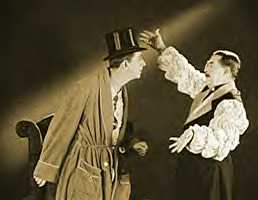
Horton in “Beggar on Horseback” (1925)
Later he attended Columbia University where he first experienced acting when he joined the university’s drama club. He appeared as a woman in his first role. He never graduated Columbia preferring to join the Dempsey Light Opera Company of Staten Island where he exercised his baritone in such fare as “The Bohemian Girl” and “The Mikado”.
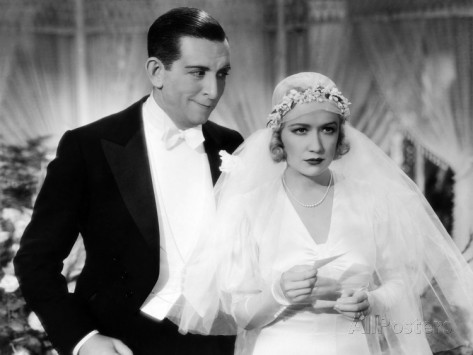
Horton and Miriam Hopkins in “Design for Living” (1933)
Having a very distinctive speaking voice, Horton easily made the transition from silent to sound films with his first speaking role as rhyming reporter Roy V. Bensinger in the 1931 version of “The Front Page”. The decade of the 30s was a very busy time for Horton during which he made more than 60 films.
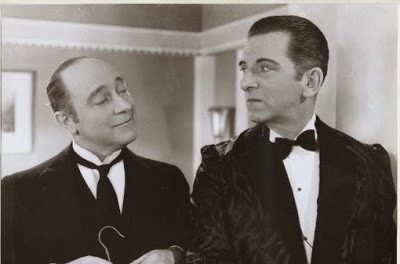
Eric Blore and Horton in “Shall We Dance” (1937)
The typical Horton character was very straight laced and dignified but who quickly turned to jello at the least difficulty or embarrassing situation. The two simple words “Oh dear” spoken by Horton could convey volumes of angst and dread. Notable films during the next two decades include “Trouble in Paradise” (1932), “Design for Living” (1933) in which he is a failed suitor to polyamorous Miriam Hopkins, “Alice in Wonderland” (1933) where he appears as the Mad Hatter, “Lost Horizon” (1937), “Here Comes Mr. Jordan” (1941) in which he is the angel responsible for taking Robert Montgomery’s soul from his body before his time, and “Arsenic and Old Lace” (1944). Perhaps he will best be remembered for his roles in a trio of Fred Astaire and Ginger Rogers vehicles of the 30s “The Gay Divorcee” (1934), “Top Hat” (1935), and “Shall We Dance” (1937) in all of which he can best be described as Astaire’s wing-man.
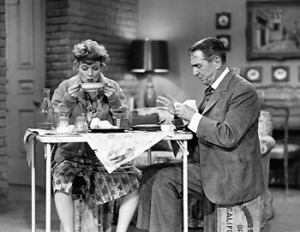
Lucille Ball and Horton in “Lucy Plays Cupid”
In the 40’s, as film roles became more scarce, he moved to appearances in radio and television. From 1945 to 1947, he hosted the radio show “Kraft Music Hall”. Television appearances included “I Love Lucy” in which he was cast against type as an aging lothario, “Dennis the Menace” where he appeared as Uncle Ned, a health food guru, and “F Troop” in which he portrayed Roaring Chicken, the Hekawi tribe’s medicine man. His voice, if not his face, are well known to children of the 60’s and 70’s as the narrator of “Fractured Fairy Tales” featured on “The Rocky and Bullwinkle Show”.
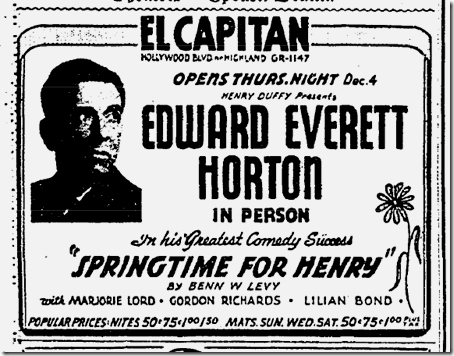 During his film work, he continued to appear in stage productions, often in summer stock. His performance as Henry Dewlip in “Springtime for Henry” was a perennial favorite and it is estimated that he performed this role more than 3000 times throughout his life.
During his film work, he continued to appear in stage productions, often in summer stock. His performance as Henry Dewlip in “Springtime for Henry” was a perennial favorite and it is estimated that he performed this role more than 3000 times throughout his life.
Horton died of cancer in 1970 at the age of 84. He was hospitalized for a time before his death and he was so busy with work that he appeared in two episodes of “The Governor and JJ” during his hospitalization.
Edward Everett Horton and Eric Blore in “The Gay Divorcee” (1934)
Edward Everett Horton and Eric Blore in “Shall We Dance” (1937)
Edward Everett Horton Narrates “Fractured Fairy Tales” (1959)
